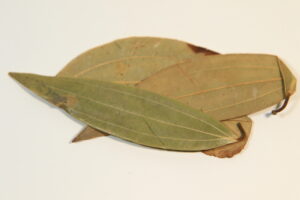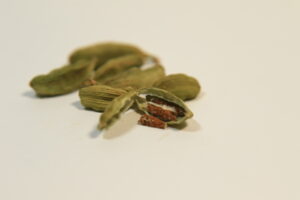Mace is a spice that is closely related to nutmeg and is derived from the same tree. It is a red, lacy covering that surrounds the nutmeg seed and is often used as a flavoring in both sweet and savory dishes.
Mace has a long and interesting history. It was used by the ancient Egyptians for embalming and was also used in traditional Chinese medicine. In medieval Europe, it was used as a flavoring for meat dishes and was even considered a luxury item. Mace was also traded extensively by the Dutch in the 17th and 18th centuries, who controlled much of the nutmeg trade.
The flavor profile of mace is similar to that of nutmeg, but it is slightly sweeter and more delicate. It has a warm and aromatic flavor with hints of cinnamon and clove. Mace is often used in baking, particularly in sweet dishes like cakes, pies, and custards. It can also be used to flavor savory dishes like soups, stews, and curries.
In terms of appearance, mace is a reddish-orange color and has a lacy texture. It is often sold in whole pieces or in ground form, and can be found in many specialty food stores and online retailers.
Mace has a number of historical and cultural uses. In addition to its use in cooking, it has been used for its medicinal properties as well. Some traditional medicine practitioners believe that mace can help with digestive issues and can also act as a natural sedative. While there is limited scientific research on the health benefits of mace, it is known to contain a number of antioxidants and other nutrients that may be beneficial for overall health.
Here are two simple recipes that feature mace:
- Spiced Nuts
Ingredients:
- 2 cups mixed nuts (such as almonds, cashews, and walnuts)
- 2 tbsp honey
- 1 tbsp melted butter
- 1 tsp ground cinnamon
- 1/2 tsp ground mace
- 1/4 tsp ground ginger
- 1/4 tsp salt
Directions:
- Preheat oven to 350°F.
- In a large bowl, mix together honey, melted butter, cinnamon, mace, ginger, and salt.
- Add nuts to the bowl and toss until coated in the spice mixture.
- Spread nuts out on a baking sheet lined with parchment paper.
- Roast in the oven for 10-15 minutes, or until golden brown and fragrant.
- Let nuts cool completely before serving.
- Apple and Mace Sauce
2. Spiced Apple dip
Ingredients:
- 4 apples, peeled and diced
- 1/2 cup water
- 1/4 cup brown sugar
- 1 tsp ground mace
- 1/2 tsp ground cinnamon
Directions:
- In a medium saucepan, combine diced apples, water, brown sugar, mace, and cinnamon.
- Bring to a boil over medium-high heat, then reduce heat to low and let simmer for 20-25 minutes, or until apples are soft and sauce is thickened.
- Use an immersion blender or transfer mixture to a blender and blend until smooth.
- Serve warm or chilled as a topping for oatmeal, yogurt, or pancakes.
In conclusion, mace is a versatile and flavorful spice that has a long and interesting history. Its warm and aromatic flavor makes it a popular choice for both sweet and savory dishes, and its cultural and medicinal uses make it a valuable addition to any spice cabinet.








